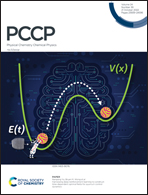Non-equilibrium spin-transport properties of Co/phosphorene/Co MTJ with non-collinear electrodes under mechanical bending
Abstract
Monolayer phosphorene has outstanding mechanical flexibility, making it rather attractive in flexible spintronics that are based on 2D materials. Here, we report a first-principles study on non-equilibrium electronic-transport properties of the Co/phosphorene/Co magnetic tunnel junction (MTJ) with two α-Co electrodes. The magnetic moments of the two electrodes are considered in the parallel configuration (PC) and the anti-parallel configuration (APC). The tunneling current through the MTJ is investigated at a small bias from 0 to 40 mV when mechanical bending is applied on the MTJ with different central angle (θ) values. For both the PC and APC, the tunneling current increases evidently and monotonously with increasing mechanical bending for 25° < θ < 40°, as compared to that without bending, which is mainly due to the reduced tunnel barrier. In the PC, the spin-injection efficiency (SIE) of the current is largely increased at a small bias from 0 to 40 mV for 25° ≤ θ ≤ 30° with a maximum of 90%, while the SIE is overall increased under all mechanical bending angles for the APC. The tunnel magnetoresistance is decreased with an increasing bias voltage, which can be largely enhanced for θ ≥ 25°, especially at small bias. Our results indicate that the Co/phosphorene/Co MTJ has promising applications in flexible low-power spintronic devices.



 Please wait while we load your content...
Please wait while we load your content...